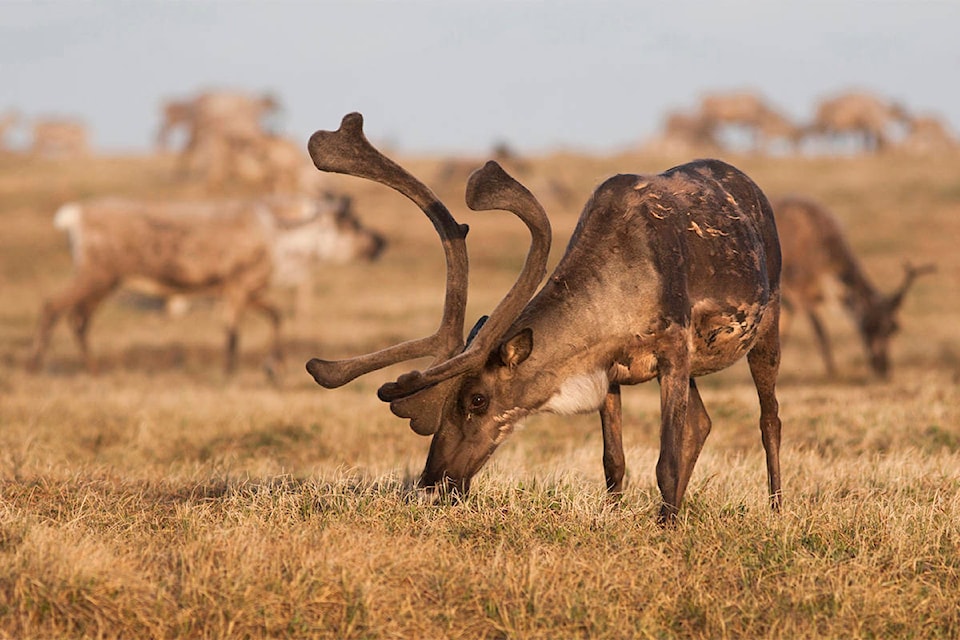A new user agreement ushered in this week makes it possible for Indigenous governments to share harvests of the Porcupine caribou herd.
The accord seeks to smooth out potential jurisdictional issues and to raise the bar when it comes to conservation.
“What it does is places the harvest management of the herd and its allocation amongst Indigenous users of the herd, it places it in the context of their treaties, their modern-day land claim agreements,” said Lindsay Staples, who facilitated negotiations.
There are eight user communities represented by Vuntut Gwitchin First Nation, the First Nation of Na-Cho Nyäk Dun, Tr’ondëk Hwëch’in, the Gwich’in Tribal Council and the Inuvialuit Game Council. The parties met in Inuvik on Aug. 27 to make the agreement official.
It modernizes affairs between governments. When the Porcupine Caribou Management Agreement was signed in 1985, only the Inuvialuit final agreement had been struck, Staples said. Most hunting of the herd took place throughout the range anyway, but times have changed, with other final agreements established since then.
“Yes, people can travel freely throughout the range,” said Staples, “but there are now traditional territories and settlement regions with boundaries. Sharing is about respecting the authority of these other governments, Indigenous governments, and that’s what this agreement does.”
According to the agreement, administrative actions could include proof of eligibility to hunt the caribou, reviewing harvesting allocations and monitoring them.
It’s incumbent on each party to develop regulations in settlement territories. These may include things like issuing licenses and tags, bylaws and education.
If numbers nose dive into the red (below 45,000 caribou) contingency plans will be activated — harvesting bulls for ceremonial purposes only, the agreement says, or providing annual harvest data, among other things.
If citizens can’t access the caribou, governments will work together to make it happen, permitting them to hunt in territories not their own. Traditional laws and cultural practices are to be followed if this occurs, the agreement says.
“For great certainty, community hunts and other traditional and modern methods are acceptable subject to the requirements of the party in whose settlement territory the harvesting of the Porcupine caribou will occur,” it says.
The glue holding this all together will be the establishment of a commission. It will be tasked with implementing the agreement, then assessing and monitoring issues going forward. One member from each party will be part of it.
“It’s a vehicle for getting people together, basically,” Staples said.
Darius Elias, a working group member and Vuntut Gwitchin councillor, said the agreement has been more than 30 years in the making.
“This is an excellent thing because it shows, to me, that our healthy Northern ecosystems and our self-governance in the North is working,” he said.
“We’re gonna take into consideration food security, harvesting rights, our traditional occupation and use.”
A provision has been added to the agreement that pays special consideration to Vuntut Gwitchin, which, unlike other communities party to the agreement, relies exclusively on the herd.
The agreement, Elias said, is another feather in the hat towards protecting the herd from extractive industries that could mar their calving grounds in the Arctic National Wildlife Refuge. In 2017, American President Donald Trump, via a rider in the most recent tax act, opened up the coastal plain to development, to ire of First Nations and environmental organizations. The final environmental impact statement is expected sometime this year.
“As far as I’m concerned, we have our house in order, and it’s gonna set the example for Canada and for Yukon and Northwest Territories governments, public governments,” Elias said.
Contact Julien Gignac at julien.gignac@yukon-news.com
